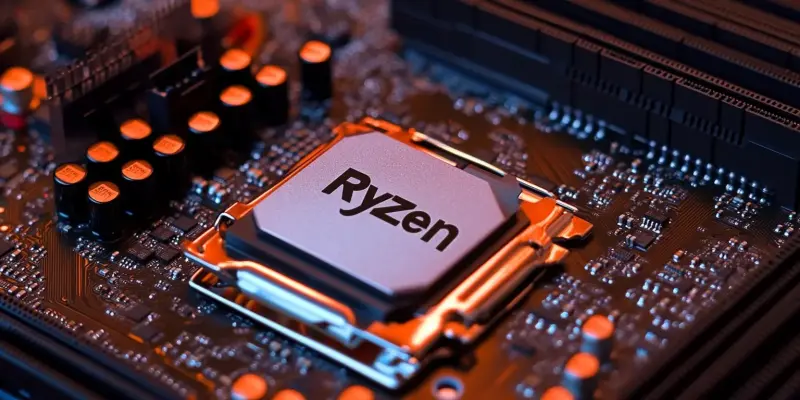The AMD Ryzen AI Max+ 395 “Strix Halo” APU, recently benchmarked on Geekbench, has taken the tech world by storm with its extraordinary multicore performance, achieving 2928 points in single-core and 19484 points in multicore tests. Integrated into the ASUS ROG Flow Z13 (GZ302EA), this high-end processor boasts an impressive 16 cores and 32 threads, alongside the Radeon 8060S integrated graphics based on the RDNA 3.5 architecture. Its frequency range spans from a base clock of approximately 3.0 GHz to a boost up to 5.1 GHz. Enhanced yet further in the Pro version, the boost clocks are anticipated to soar even higher.
The distinction of the “Strix Halo” APUs from their “Strix Point” counterparts lies significantly in their specifications and GPU capabilities. Unlike the Strix Point flagship APU, Ryzen AI 9 HX 370/375, which maxes out at 12 cores and 24 threads, the Strix Halo variants can feature up to 16 cores and 32 threads. The integrated Radeon 8060S GPU, equipped with 40 Compute Units, marks a substantial upgrade compared to Strix Point’s 12 Compute Units. This improvement could enable the Radeon 8060S to rival discrete GPUs like the RX 7600, particularly advantageous for budget gaming laptops and CPU-primary tasks that require superior graphics and computing power.
Initially, the Geekbench benchmarks indicated minor variations in single-core and multicore scores, which is typical considering Geekbench’s inherent result fluctuations. Such robust specifications aim to resolve the necessity for discrete GPUs in budget gaming laptops by significantly enhancing integrated graphics’ capabilities. If the Strix Halo APUs deliver as anticipated, they could revolutionize budget gaming, providing high-end performance without the added cost of a separate GPU.
Despite these advancements, AMD’s higher-end integrated graphics units, such as the Radeon 8060S, do not completely eliminate the argument for maintaining discrete GPUs in high-end gaming rigs. Discrete GPUs still typically offer better performance targeted specifically for gaming, largely due to dedicated resources and higher thermal ceilings. However, integrating such powerful graphics units within APUs signifies a trend towards cutting-edge performance, all packed into a single versatile chip. This integration promises a blend of cost-effectiveness and the best gaming/computing experience for the mainstream market.
Future Prospects
The recently benchmarked AMD Ryzen AI Max+ 395 “Strix Halo” APU has made waves with its incredible multicore performance on Geekbench, scoring 2928 points in single-core and 19484 points in multicore tests. This high-end processor is featured in the ASUS ROG Flow Z13 (GZ302EA) and offers 16 cores and 32 threads, along with Radeon 8060S integrated graphics based on RDNA 3.5 architecture. The processor’s frequency ranges from a base clock of around 3.0 GHz to a boost of up to 5.1 GHz, with the Pro version expected to have even higher boost clocks.
The “Strix Halo” APUs stand out from the “Strix Point” series, particularly in their specifications and GPU performance. For example, the Ryzen AI 9 HX 370/375 maxes out at 12 cores and 24 threads, whereas the Strix Halo can feature up to 16 cores and 32 threads. Additionally, the integrated Radeon 8060S GPU, with its 40 Compute Units, is a significant upgrade over the Strix Point’s 12 Compute Units, potentially rivaling discrete GPUs like the RX 7600.
Despite these cutting-edge advancements, AMD’s high-end integrated graphics, such as the Radeon 8060S, do not completely eliminate the need for discrete GPUs in top-tier gaming setups. Discrete GPUs often provide superior gaming performance due to their dedicated resources and higher thermal limits. However, powerful graphics integrated into APUs indicate a trend towards exceptional performance in a single, versatile chip. This integration offers cost-effective, high-quality gaming and computing experiences for the mainstream market, highlighting a promising future for budget gaming laptops. If the Strix Halo APUs deliver as expected, they could transform budget gaming by delivering high-end performance without the added expense of a separate GPU.

